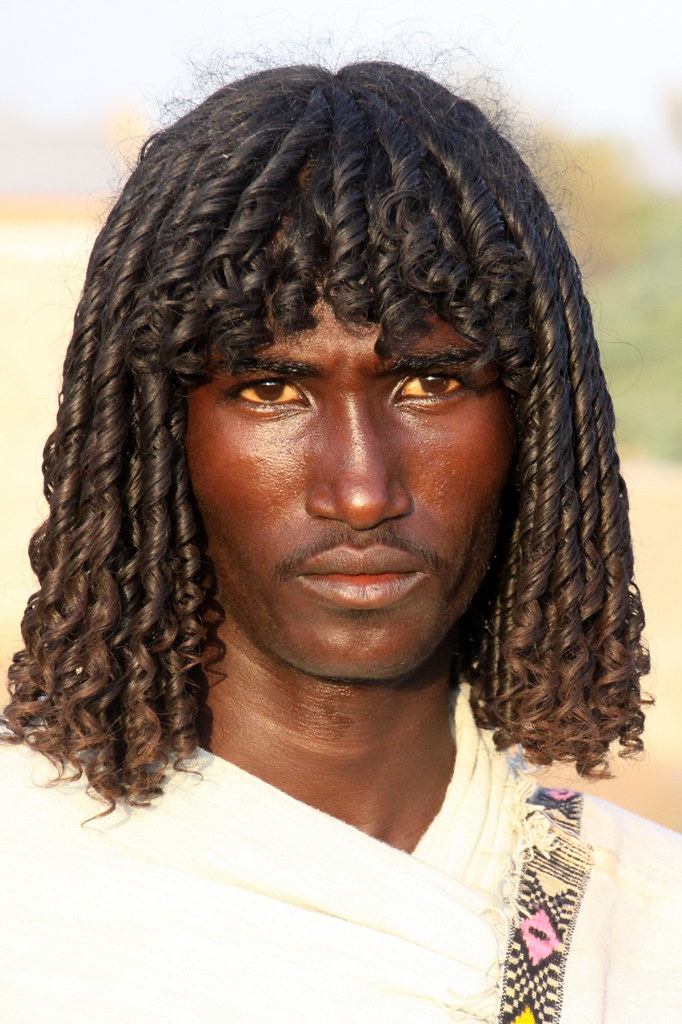Truth be told , there is a great deal of controversy as to whether Af Maay is a separate language or a dialect of Somali -same for Jiddu etc . If af Maxa tiri speakers are often unable to understand Af Maay in its purest forms , I doubt Somali speakers can understand Rendille speakers or most of what is said in that video .
The first “Somali proper “ most likely departed what is now South Eastern Ethiopia towards Southern /Western Somalia . The Rendille stayed put in Southern Ethiopia until the great trek to Northern Kenya was forced upon them by the rise of the Borana after the decline of Adal.The Sab Somalis who chose to retain farming settled in Southern Somalia ( the proto Somalis are said to have been agriculturalists ). The Maxa Tiri speakers ventured out with their livestock into all different directions of modern Somalia . These people became the Ajuuraan, Hawiye , Madanle, Darood and so forth . The Rendille are ancient cousins of those people . They are not an offshoot nor is their language a dialect of Somali .
---------------------------------------------------------------
Recognition of these languages is political. The academics already accept them on linguistic bases.
 Somalia
Somalia
Boon
[bnl] Jubbada Dhexe region: Jilib district, bush settlements. 59 (2000).
Status: 8b (Nearly extinct).
Alternate Names: Af-Boon.
Dialects: None known. Reportedly similar to Somali
[som].
Classification: Afro-Asiatic, Cushitic, East.
Comments: Distinct from Boni
[bob]. ‘Boon’, low caste, including Yibir, Midgaan (Midgo, language Af-Midgood), Madiban, Tumal, Yahar, Yihir, and other clans.
More Information
Dabarre
[dbr] Bay region: Dhiinsoor district area, Dabaare; Jubbada Dhexe region: Bu’aale district; Shabeellaha Hoose region: Sablaade district. 20,000 (1998 J. Leclerc).
Status: 6a (Vigorous).
Alternate Names: Af-Dabarre.
Dialects: Dabarre, Iroole (Af-Iroole). A very distinctive language in the Digil clan family. Dialects are clan names.
Classification: Afro-Asiatic, Cushitic, East, Somali.
Comments: Muslim.
More Information
Garre
[gex] Bay region: southeast border area; Shabeellaha Hoose region: Qoryoley and Wanla Weyne districts. 50,000 (1998 J. Leclerc). Ethnic population: 100,000 (1992).
Status: 6a (Vigorous).
Alternate Names: Af-Garre.
Dialects: None known. Reportedly linguistically similar to Boni
[bob].
Classification: Afro-Asiatic, Cushitic, East, Somali.
Comments: Part of the Hawiye clan family. Consider themselves part of the Garreh people in Kenya, though they now speak different languages. Some ethnic Garre in Somalia speak Maay
[ymm] as L1. Muslim.
More Information
Jiiddu
[jii] Shabeellaha Hoose region: west of Moqdisho. 20,000 (1998 J. Leclerc).
Status: 6a (Vigorous).
Alternate Names: Af-Jiiddu, Jiddu.
Dialects: Distinct from Somali
[som] and Tunni
[tqq], usually grouped under Digil dialects or languages. Different sentence structure and phonology from Somali. More similar to Somali than to Baiso
[bsw]. Reportedly some similarities to Konsoid languages and to Gedeo
[drs], Alaba-Kabeena
[alw], Hadiyya
[hdy], and Kambaata
[ktb].
Classification: Afro-Asiatic, Cushitic, East, Somali.
Comments: Muslim.
More Information
Maay
[ymm] Bakool, Bay, Gedo, Hiiraan, Jubbada Dhexe, Jubbada Hoose, and Shabeellaha Hoose regions. 1,750,000 (2015).
Status: 5 (Developing).
Alternate Names: Af-Maay, Af-Maay Tiri, Af-May, Af-Maymay, Maay Maay, Mai Mai, Rahanween, Rahanweyn.
Autonym: Af-maay.
Dialects: Af-Helledi. May be more than 1 language; dialects form a continuum. Within the Maay dialect continuum, at least two dialect groupings may be discerned, largely between the Digil clans (e.g, Wenle Weyn) and the Mirifle clans (based on Bay Bakool). The Digil consider themselves the “royal clan class” of the Maay-speaking Rahanweyn. Somali
[som] is difficult or unintelligible to Maay speakers, except when learned through mass communications, urbanization, and internal movement. Different sentence structure and phonology from Somali. Af-Helledi is a Maay secret language used by hunters.
Classification: Afro-Asiatic, Cushitic, East, Somali.
Comments: Little travel. Muslim.
More Information
Mushungulu
[xma] Jubbada Hoose region: Jamaame district; urban areas Kismaayo and Muqdisho. 20,000 (1998 J. Leclerc).
Status: 6a (Vigorous).
Alternate Names: Kimushungulu, Mushunguli.
Dialects: None known. May be the same as, or intelligible of, Zigula
[ziw] or Shambala
[ksb].
Classification: Niger-Congo, Atlantic-Congo, Volta-Congo, Benue-Congo, Bantoid, Southern, Narrow Bantu, Central, G, Zigula-Zaramo (G.311).
Comments: Descended from fugitive slaves who escaped from Somali masters in Middle Shabeelle region around 1840. Muslim, traditional religion.
More Information
Oromo, Borana-Arsi-Guji
[gax] Gedo region. 41,600 (2000).
Status: 5 (Developing).
Alternate Names: Southern Oromo.
Dialects: Borana (Booran, Boran).
Classification: Afro-Asiatic, Cushitic, East, Oromo.
Comments: The Oromo variety in Gedo is probably Borana; that in the Lower Jubba region is probably Orma
[orc]. The Oromo spoken in the Lower Jubba region may actually be Orma. The Orma controlled that area until the mid or late 19th century. They move from lower Tana River inland toward Kitui District during rainy season. Muslim.
More Information
Somali
[som] Widespread. 7,820,000 (2015). Total users in all countries: 16,224,000 (as L1: 16,128,400; as L2: 95,600).
Status: 1 (National). Statutory national language (2004, Transitional Federal Charter, Article 7(1)).
Alternate Names: Af-Maxaad Tiri, Common Somali, Soomaaliga, Standard Somali.
Autonym: اف سومالى (Af-Soomaali).
Dialects: Northern Somali, Benaadir, Af-Ashraaf (Ashraaf). Northern Somali is basis for standard Somali. Readily intelligible to Benaadir Somali speakers, but difficult or unintelligible to most Maay
[ymm]. Those in Merka and Muqdisho speak Af-Ashraaf, a distinct variety which may have limited inherent intelligibility of standard Somali.
Classification: Afro-Asiatic, Cushitic, East, Somali.
Comments: Muslim.
More Information
Tunni
[tqq] Jubbada Dhexe and Shabeellaha Hoose regions: Baraawe, Dhiinsoor, and Jilib districts; Bay and Jubbada Hoose regions. 20,000 (1998 J. Leclerc).
Status: 6a (Vigorous).
Alternate Names: Af-Tunni.
Dialects: Distinct from Somali
[som] or Jiiddu
[jii], usually grouped under the Digil dialects or languages. Different sentence structure and phonology from Somali
[som].
Classification: Afro-Asiatic, Cushitic, East, Somali.
Comments: Maay
[ymm] language influences. Nomadic. Muslim.
More Information
--------------------------------
Glad to see you recognize the Cushitic refugium in southern Ethiopia. 21 of 24 Cushitic tribes are there, so it is basic.
The Rendille say they separated from the Somalis at Marsabit. That is near Lake Turkana, on the grazing lands at the head of the Nile tributaries, in the same area as Namoratunga, the Oromo calender site. The Rendille say they came with the Somalis from the Suez canal. through Ethiopia.
That would have put them at Marsabit way, way before the Adal wars and before the separation of the Cushitic groups. It is also a strong indication that the combined migration was south in the Sudan before it turned east in southern Ethiopia/northern Kenya and then north into Somalia.




